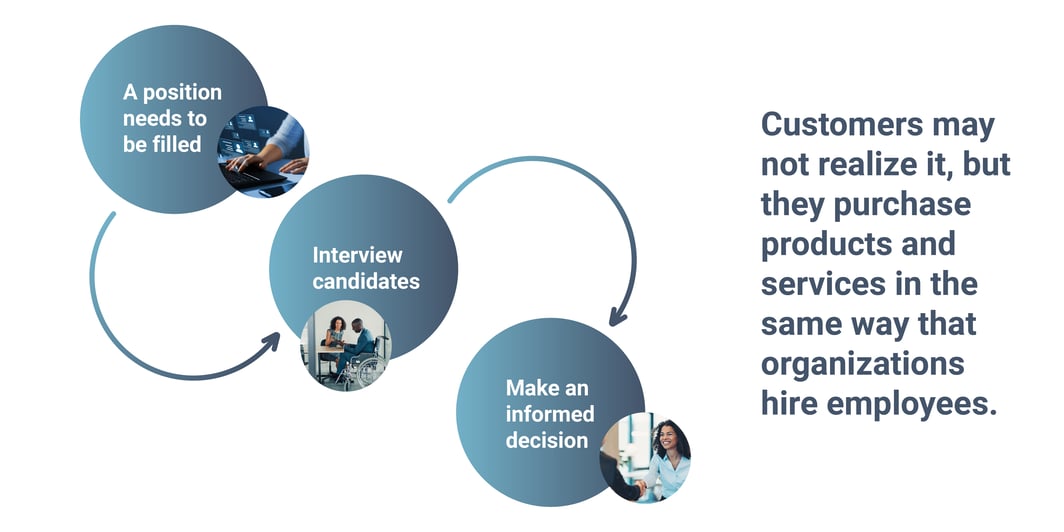August 18, 2023
by Vik Thakral
August 18, 2023
Clayton Christensen, the business guru, and Kim B. Clark, Professor of Business Administration at the Harvard Business School, note that of the 30,000 new products launched yearly for consumers, approximately 95% fail. That's a high rate of failure by any measure. While nobody who launches a new or improved product wants to be in that 95%, it's often difficult to know which steps are best to take to improve your odds of success.
A good place to start is by asking:
"Does our product or service meet identifiable customer needs, wants, and expectations?"
The field of Customer Experience (CX) has the right tools to help you gather insights that create a better understanding of your customer base that will improve strategy and decision-making. Many organizations turn to extensive formal market research to find an answer to this question. This research can be beneficial, but an often-overlooked step is first getting out and talking to your customers.
Speak to your customers when they interact with your organization's brand is a great start. This is sometimes referred to as an 'outside in' approach.
Consider this scenario: A new homeowner needs to find a landscaper to maintain his 3 acre lawn and surrounding bushes. he takes stock of what he needs (large scale mowing, bagging & disposal of clippings, shrub pruning) and other important considerations (proximity, pricing, licensed & insured) and then seek out the best service provider. Your customers do the same thing.
In most industries outside of landscaping, market needs are always shifting due to any number of societal, technological, or competitive factors. Keeping pace with this constant evolution requires regular evaluations of the needs of your core customer segments to ensure the your marketing strategy is still on-target.

Learn which questions your customer ask during their "interview" with your product or service, or "What motivates a customer to engage with your product or service?" Like most brands, price, quality, convenience, effort, and time are high on customers' lists. Determining which factors 'win' depends on the product/service, the person, and the context.
For example, when it comes to buying gas, frequently, the winning factor is convenience. Gas is a commodity that functions the same regardless of the brand. Thus, many drivers will not drive out of their way to save pennies on the dollar.
Other factors to consider are brand loyalty, member associations, etc., but there are always questions to remember:
A customer will rarely stop to put helpful information in a suggestion box. What's more, if you fail to provide something as simple as a suggestion box, it's even less likely that the customer will call you to tell you why they like your product or service. Therefore, you need to contact them to determine why they are satisfied.
You can do this with online surveys, direct phone calls, focus groups, email, and social media. It's essential to be sincere in your questions, ask only questions you genuinely want to know the answer to and respect the answer.
If you have a physical branch, consider having someone on-site to ask customers why they are making specific purchases. Have conversations with your customers — as many as you can. In addition to learning how to make and sell products that answer their wants and needs, you're also building a relationship with customers and fostering loyalty to your brand. People like to give their opinions, and they'll remember when you ask for them.
How you capture customer feedback is vital to help drive the application of the learnings most effectively. Several Customer Experience tools help to bring customer needs and feedback to life like:
Download our guide to journey mapping, which provides tips, a real-life example, and an editable template.
Anticipate the customer's response to your product or service. Trust your intuition when predicting responses, as long as it's grounded in customer testimonials and other relevant data.
Make business decisions more than a guessing game and keep a pulse on what customers need, want, and expect by talking to them.
Many organizations will capture customer feedback but need to do something with the data and insights they receive. The key to creating more positive customer experiences and capturing a stronger connection to your brand is taking action on the insights you receive through customer research. Then, develop action plans to help you utilize the insights to design and/or build better products or services for your customers.
Create an entire feedback loop that allows you to identify your target customer segments, consistently gain feedback through customer research, and utilize the insights to build better products or services that meet your customers' needs. Finally, remember to take action on your customer data and insights, leading to higher customer satisfaction and stronger brand loyalty.
Customer research represents only one capability of Customer Experience, which falls under the concept of "Customer Understanding." To deliver differentiated and unique value to your customer base, an organization has to consider investing time into improving the following CX capabilities: Customer Understanding, Customer Experience Vision/Strategy, Customer Impact Measurement, Design and Innovation, and Customer-Centric Culture. Identifying your customer needs is an excellent start to improving your "Customer Understanding" capability and maturing your CX practice.
We can help you build personas, customer journey maps, needs assessments, service blueprints, or empathy maps. Fill out the form below, and we can get you on the right path.